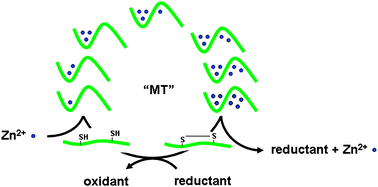Human metallothionein metallomics†
Abstract
Research on metallothionein (MT), unlike studies on any other

- This article is part of the themed collection: 2007 International Symposium on Metallomics, Nagoya, Japan
* Corresponding authors
a
Department of Preventive Medicine and Community Health, The University of Texas Medical Branch, 700 Harborside Dr., Galveston, TX, USA
E-mail:
yuali@utmb.edu
Fax: +1 409-772-6287
Tel: +1 409-772-9018
b
Departments of Preventive Medicine and Community Health and Anesthesiology, The University of Texas Medical Branch, 700 Harborside Dr., Galveston, TX, USA
E-mail:
womaret@utmb.edu
Fax: +1 409-772-6287
Tel: +1 409-772-4661
Research on metallothionein (MT), unlike studies on any other

 Please wait while we load your content...
Something went wrong. Try again?
Please wait while we load your content...
Something went wrong. Try again?
Y. Li and W. Maret, J. Anal. At. Spectrom., 2008, 23, 1055 DOI: 10.1039/B802220H
To request permission to reproduce material from this article, please go to the Copyright Clearance Center request page.
If you are an author contributing to an RSC publication, you do not need to request permission provided correct acknowledgement is given.
If you are the author of this article, you do not need to request permission to reproduce figures and diagrams provided correct acknowledgement is given. If you want to reproduce the whole article in a third-party publication (excluding your thesis/dissertation for which permission is not required) please go to the Copyright Clearance Center request page.
Read more about how to correctly acknowledge RSC content.
 Fetching data from CrossRef.
Fetching data from CrossRef.
This may take some time to load.
Loading related content
